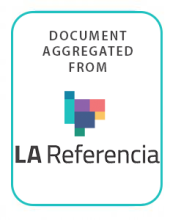Land Library
Welcome to the Land Portal Library. Explore our vast collection of open-access resources (over 74,000) including reports, journal articles, research papers, peer-reviewed publications, legal documents, videos and much more.
/ library resources
Showing items 1 through 9 of 24.Sustainable management of the natural resources requires critical understanding of the dynamics of land use and land cover change (LULCC). Nguruman sub-catchment in the northern part of Kajiado County has experienced rapid land use and land cover changed over the past decades.
Land Use and Land Cover Change (LULCC) is the most prominent cause of Soil Organic Carbon (SOC) variability in any landscape.
Region:East Africa.Focus:A review of catchment studies (n = 37) conducted in East Africa evaluating the impacts ofLand Use and Land Cover Changes (LULCC) on discharge, surface runoff, and lowflows.New hydrological insights:Forest cover loss is accompanied by increased stream discharges andsurface
Region
East Africa.
Focus
A review of catchment studies (n = 37) conducted in East Africa evaluating the impacts of Land Use and Land Cover Changes (LULCC) on discharge, surface runoff, and low flows.
Land change in the Greater Antilles differs markedly among countries because of varying socioeconomic histories and global influences. We assessed land change between 2001 and 2010 in municipalities (second administrative units) of Cuba, Dominican Republic, Haiti, Jamaica, and Puerto Rico.
Los Sensores Remotos se han convertido en los últimos tiempos en una herramienta importante para la planificación territorial, debido a la originalidad metodológica con la cual operan y el amplio espectro de observación de la superficie terrestre.
The aim of the study was to assess the state of land cover dynamics in the Chyulu Hills watershed ecosystem of Makueni and
Kajiado Counties in Kenya by considering the following objectives:- a) assessing the state of land cover in 2015, b) analysing
Las características espaciales de las ciudades resultan decisivas en los principales problemas urbanos: la calidad de vida, la movilidad, el consumo energético y de materiales, etcétera.
En este número sobre suelos hemos planteado una serie de preguntas clave: ¿debe extenderse o comprimirse el suelo urbano? ¿Quién asume los costos y quién recibe las ganancias? ¿Contribuye esa respuesta a la igualdad entre los habitantes de la ciudad?



